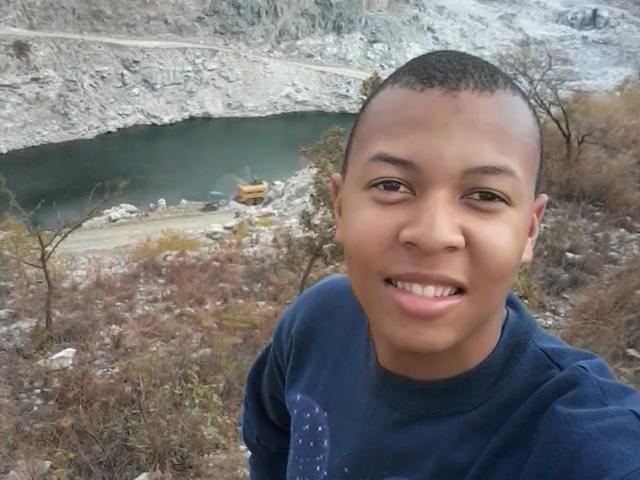[imagesource: Steve Chingwaru]
Having been born in Benoni, I thought of the orange mine dumps dotted around the East Rand as nothing but landfills, eyesores, and the bane of everyone’s dry throats and noses.
Most people think the same thing, except for Steve Chingwaru who saw them for all their invisible worth.
Chingwaru has calculated that approximately 420 tonnes of ‘invisible gold’ – with a value of $24 billion, nogal – is buried in the Witwatersrand’s mine dumps.
Now, the 26-year-old geometallurgist is being flown up to the city of his youth on an almost weekly basis by mining companies who want him to help them extract maximum value from the mounds of orange dust.
Al Jazeera notes that Chingwaru’s incredible discovery came from research for his master’s thesis – that was so impressive it saw his degree upgraded to a PhD.

Soon after enrolling in a geology degree at Stellenbosch University, Chingwaru switched from being an exploration geologist to the field of geometallurgy, which combines classic geology with metallurgy and typically involves working at a processing plant. For his academic research, Chingwaru focused on the iconic Jozi mine dumps of his youth, known as “tailings” in the industry.
“They were already extracting the gold from these tailings,” he explains. “But they were only managing to get out 30 percent of the gold they contained.” I wanted to know what was happening to the other 70 percent … Where was it sitting? Why weren’t they getting it out? Seventy percent is a lot,” he says, before breaking into an unexpected chortle.
In analysing samples from mine dumps across the Witwatersrand, his research revealed that most of the gold was embedded in a mineral called pyrite (often referred to as “fool’s gold”) and was completely overlooked by current extraction methods.
“We already know how to get gold out of pyrite,” he says, citing the example of the Carlin mine in Nevada. “But at the moment, all the tailings processors in South Africa are only extracting free gold, using cyanide.”
The answer to why is twofold. One, Chingwaru is the first person to work out how much “invisible gold” is hidden in tailings across the Witwatersrand. And two, it will take a lot of time and effort to extract all 420 tonnes.
“His research shows that there is a lot of gold. The big question, however, is whether we currently have the technology to economically extract all of the gold and make a profit,” says Associate Professor Megan Becker, who works at the Centre for Minerals Research in the Department of Chemical Engineering at the University of Cape Town (she was not involved in Chingwaru’s research). “Unless this can be done, no company will invest in it.”
However, the intense interest from several South African tailings reprocessors suggests it’s an investment they would be willing to make.

Where there is gold – even if it’s of a fool – there is money to be made. Lucky for Steve, he’s receiving job offers from left, right and centre.
[source:aljazeera]





